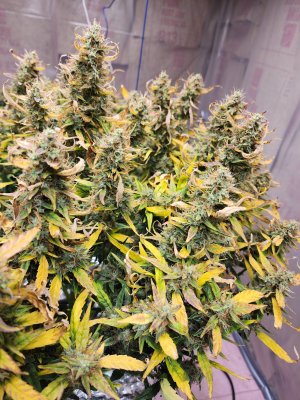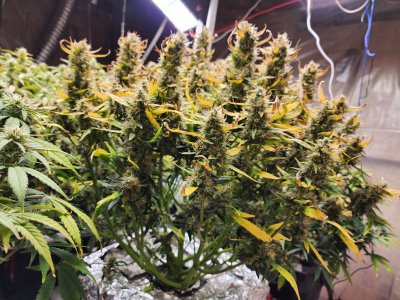I am not an auto grower, so my feedback reflects that.
I do see significant light stress there. I feel pretty comfortable speaking about lights for photo plants. With autos? I guess that is where your experiments come in.
Since you are almost at harvest, I'm thinking just ride it out and see what you get. If you want help with a plan from the start on your next attempt, I can probably help you avoid root rot and maybe some other things. Or you can grow your own way and learn with hands on.
One thing that was a red flag for me was the aluminum foil around your seedlings. I would opt for something breathable and non-reflective there personally.



